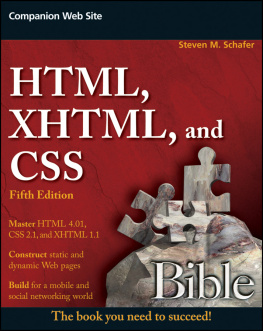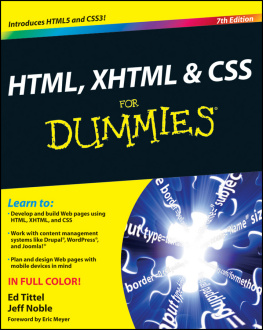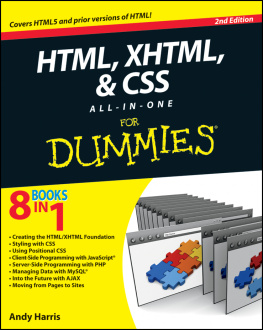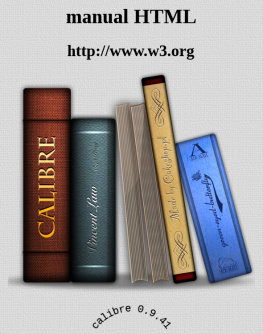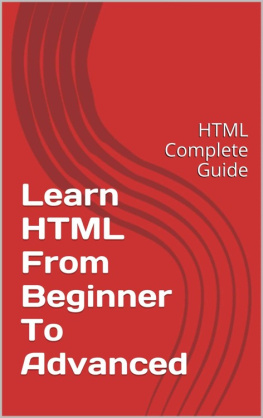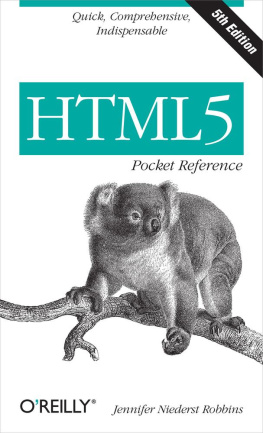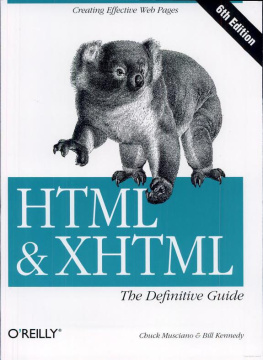Steven M. Schafer - HTML, XHTML, and CSS Bible
Here you can read online Steven M. Schafer - HTML, XHTML, and CSS Bible full text of the book (entire story) in english for free. Download pdf and epub, get meaning, cover and reviews about this ebook. year: 2010, publisher: Wiley, genre: Computer. Description of the work, (preface) as well as reviews are available. Best literature library LitArk.com created for fans of good reading and offers a wide selection of genres:
Romance novel
Science fiction
Adventure
Detective
Science
History
Home and family
Prose
Art
Politics
Computer
Non-fiction
Religion
Business
Children
Humor
Choose a favorite category and find really read worthwhile books. Enjoy immersion in the world of imagination, feel the emotions of the characters or learn something new for yourself, make an fascinating discovery.
- Book:HTML, XHTML, and CSS Bible
- Author:
- Publisher:Wiley
- Genre:
- Year:2010
- Rating:5 / 5
- Favourites:Add to favourites
- Your mark:
HTML, XHTML, and CSS Bible: summary, description and annotation
We offer to read an annotation, description, summary or preface (depends on what the author of the book "HTML, XHTML, and CSS Bible" wrote himself). If you haven't found the necessary information about the book — write in the comments, we will try to find it.
The existence of Web pages depends on three vital technologies: HTML (base language that Web pages are written in), XHTML (standards that define how to write HTML pages), and CSS (standard that applies formatting styles to Web pages). This new edition provides you with critical coverage of these three Web authoring standards, and places special focus on the upcoming releases of HTML 5 and CSS 3.
Serving as a tutorial and reference, this comprehensive resource explains the basic structure and necessary formatting to create a static (non-changing) and dynamic (changing) page on the Internet.
- HTML, XHTML, and CSS are the three major Web authoring standards for creating either a static or dynamic Web page
- Guides you through using HTML to create Web documents and introduces updates to HTML 5
- Demonstrates best practices for using tools and utilities to create Web documents
- Includes coverage of the new CSS 3 and tips and tricks for maximizing its abilities
Helpful examples round out this essential guide and will get you up and running with HTML, XHMTL, and CSS in no time!
Note: CD-ROM/DVD and other supplementary materials are not included as part of eBook file.
Steven M. Schafer: author's other books
Who wrote HTML, XHTML, and CSS Bible? Find out the surname, the name of the author of the book and a list of all author's works by series.

